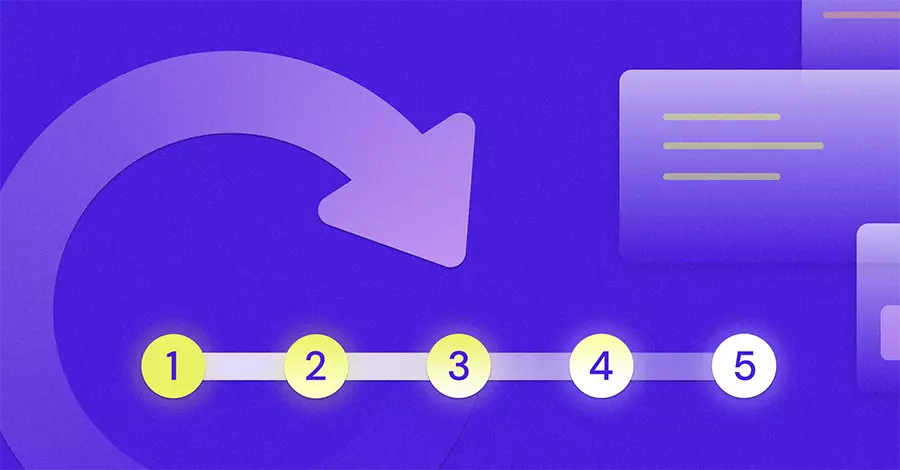The construction project life cycle consists of five important phases. Understanding what each stage embodies and how they work together in succession can help you successfully initiate and closeout construction projects. Poor planning, after all, can result in significant delays and additional (and often unnecessary) costs. Familiarizing yourself with a project’s typical life cycle and becoming aware of the industry’s constraints will encourage proper planning, improving productivity in the office and on the job site. Here are the 5 stages of a construction project.
Table of Contents
1. Assessment, conceptualization, and initiation
From the very beginning, it’s important first to assess whether the project is actually possible—in other words, whether the project is feasible and worth investing resources into. A feasibility test can help you decide if the project is realistic based on its core objectives.
To evaluate whether it’s beneficial to start and finish the project (and whether it would be practical), consider its main features and goals. You may benefit from asking these questions:
- What will the building be used for?
- Does the proposed budget align with the project’s demands?
- What’s a realistic timeline from its initiation to completion?
Talk to your team to brainstorm possible solutions before ruling anything out.
Once potential risks have been identified and the project has been approved, it may help to create a project initiation document (PID) summarizing the project’s purpose and any relevant information needed to begin.
2. Definition, planning, and development
The second stage of the construction project life cycle involves defining the project and extensively planning it, aligning all of its details with the main goals and objectives. This is perhaps one of the most important phases, as it lays down the foundation for how well the rest of the project will go. Read more about construction project planning.
Start by identifying the work that needs to be done, emphasizing major deliverables, and deciding who will be assigned to each task. Now is the time to solidify the roles and responsibilities of team members. Establish realistic timelines and plan for when you’ll need to present progress reports. Construction team planning has also a crucial role here.
During this step, you should also identify how many resources (such as labor, materials, and equipment) will be needed and strategize how they’ll be allocated. This initial resource management will inform the project’s estimated costs. Determining expenses is arguably one of the most time-consuming segments of planning, but it’s also a crucial step since it can be the difference between a project’s success or failure.
A project manager is usually responsible for preparing the budget and documenting a detailed plan for progress targets and quality assurance.
3. Implementation, execution, and launch
Out of all the phases of construction project management, you would ideally spend most of your time implementing the project plan and putting it into practice.
After setting the project into motion, it’s important to ensure that all teams remain coordinated and in constant contact with one another. Effective communication keeps projects running smoothly, strengthening the likelihood that you’ll meet key targets on time.
Throughout this step, you’ll also need to make sure that spending is adhering to the predetermined budget approved by all parties. In cases where expenses have exceeded a budget, corrective measures should be determined and executed as soon as possible while corresponding with respective stakeholders.
Record progress as it occurs so you’ll have plenty of information to include when preparing reports, including deviations from the original project plan. Focus on resulting costs, the impact on the project’s overall schedule, and whether the quality of deliverables will be compromised.
Tracking each project component shows due diligence and will make the next phase in the construction project life cycle much easier.
Remember to keep sponsors and stakeholders informed at every step and milestone.
4. Performance monitoring
While this step in the construction project life cycle often occurs in tandem with the implementation phase, it helps to also consider it separately. Tracking performance with a dedicated team and daily supervision allow you and all parties to remain updated on the project’s overall status.
Information analysis is vital in monitoring a project’s performance. It helps to use Key Performance Indicators (KPIs) to measure:
- Whether goals are being fulfilled and met on time
- If costs comply with the pre-set budget
- How the project is performing in terms of progress, changes, and challenges
- The quality of deliverables
The results of each indicator should align with the initial project plan and should be regularly compiled in progress reports.
5. Conclusion and closing
The last phase of the construction project life cycle involves finalizing every facet of the project, including wrapping up construction with finishing touches and concluding with one final inspection.
Present the completed project to the client or owner, offering the last of the deliverables and passing down any relevant documentation for approval. The project has successfully concluded once stakeholders have given the green light.
In the aftermath of the project, it helps to take time to reevaluate the project’s execution as a whole, including thinking about what worked best and what could have been done differently. Analyzing your existing processes and adjusting them as needed can be useful for improving future projects.
Managing the stages in a construction project with Bridgit Bench
Getting through all the stages in a construction project can be a toil when you’re using inefficient organizational and tracking tools like spreadsheets or pen and paper. Modernizing your project management process with new technology can help you assign and sort through tasks while accurately monitoring project progress.
Bridgit Bench is an all-in-one project management solution that supports you every step of the way. Project managers benefit from an organizational dashboard that allows users to manage human capital and track project development on a cloud-based system.
Already using another platform? Bridgit also seamlessly integrates with other leading project management, HRIS, and CRM systems, including Autodesk, Salesforce, Procore, and more.


